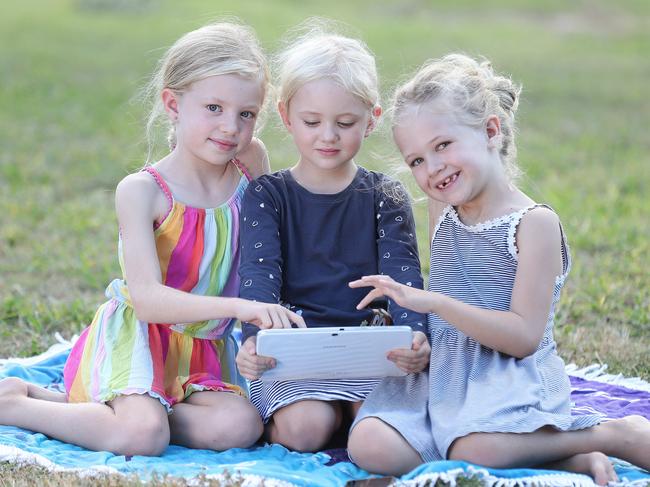Shocking reality of digital childhood: How excess screen time is harming Aussie kids
A shocking report outlines the grim reality of the digital childhood of some of our youngest Australians and found screens in all shapes and sizes are leaving their mark across our kids.
Education
Don't miss out on the headlines from Education. Followed categories will be added to My News.
Just as technology has transformed our lives so is it changing our children – creating a generation of indifferent, easily distracted, unmotivated students.
The new Growing Up Digital Australia report outlines the grim reality of the digital childhood of some of our youngest Australians and found screens in all shapes and sizes are leaving their mark across our kids.
It found 78 per cent of educators observed a decrease in students’ ability to focus on educational tasks, 80 per cent had seen a decline in students’ empathy, while 60 per cent noted a drop in physical activity.
The declines were observed by teachers over the past five years and a criteria for participating in the research was that the respondent had to have taught for the previous five years.
The landmark paper comes at a time when students have been forced to spend more time on screens as distance learning shifts to digital platforms and many schools begin moving even kindergarten students onto online classrooms for Term 2.
Professor Adrian Piccoli is Director of UNSW’s Gonski Institute for Education and said the digital double edged sword is proving hard to balance – and will be even further complicated now.
“The timing of the research is really significant because we’ve got in this research a snapshot of the impact of screens on learning … and now we have a natural experiment where children are home … so there is going to be more screen time and in fact children encouraged to use screens,” he said.
“So, if we are seeing those kinds of observed negative consequences in classroom pre COVID that was worrying enough so what happens now when there is even more exposure to screens?”
While the study does not make a direct link between the growing use of technology and the decline in children’s wellbeing, Professor Piccoli says there is an obvious correlation.
“What the research says the teachers are observing is uncontrolled screen use so what happens when children go to bed too late because they are on screen but they get woken up in the middle of the night by notifications or text messages?
“Then they come to school either tired or distracted and these are the consequences of too much screen time at the wrong time.”
Australian eSafety Commissioner Julie Inman Grant warns that when online exposure goes up, so do the risks of abuse, cyber bullying and even unwanted contact from strangers and Professor Piccoli compares the ramifications of too much online exposure to smoking – but he also says we need to be careful not to turn technology into this generation’s ‘boogie man.’

“What we know about the health consequences of screen time is basically what we knew about the health consequences of smoking in the 1930s. But the difference between smoking and screens is there is healthy screen use.”
“The problem arises when children use it excessively and at the wrong time.”
The report found two thirds of teachers believed that opportunities to facilitate inquiry-based learning were actually enhanced by the use of technology and over half agreed that student reporting was boosted by digital technologies.
Glenn Fahey, Research Fellow in Education Policy at Centre for Independent Studies said he is optimistic about the impact technology has on our education, but we need to be clear about the difference between technology for education use and social and private uses.
“They need to be disentangled,” he said.
“There is a nice theory that there is a Goldilocks amount of time that peaks at two hours a day and everything after that is detrimental but the evidence on that is not conclusive.”


Mother of two Jennifer Dugard is a personal trainer and on the Fitness Australia board. They have been isolating for more than a month and have instituted a ‘marble’ system to keep the balance between online exposure and being active for her children.
“It has definitely been a learning curve in terms of keeping them moving and putting those parameters on technology.
“We want to teach them how to make decisions so we have a marble system; a ride around the block is worth half a marble and a run is worth a full marble.
“They can earn up to 30 marbles a day and they get an hour and a half on technology and they can take that however they like.”
Originally published as Shocking reality of digital childhood: How excess screen time is harming Aussie kids
